If you want to know about the lighting design in a building or introduction of electricity production or placement of electric equipment in building, please click the link.
Lighting plays an essential role in architecture, as it can enhance the aesthetic quality of a space, influence the mood and atmosphere, and even affect the functionality of a building. In recent years, advancements in lighting technology have led to innovative and creative lighting solutions in architecture.
Designing a basic lighting scheme requires the consideration of many factors, not just the achievement of a desired lighting level. Basic objectives must first be established, such as:
- What sort of tasks will be performed in the area?
- What ‘mood’ needs to be created?
- What type of lighting will create a comfortable environment?
There are also standards and legislation that need to be complied with. For example:
- How energy efficient must the lighting be?
- How will Building Regulations affect the design?
- Is emergency lighting required?
When all of these objectives and requirements have been established, they can be expressed as a series of lighting criteria in order to facilitate a quality lighting design.
- Light is the medium that makes visual perception possible.
- Light is radiant energy, usually referring to electromagnetic radiation that is visible to the human eye and is responsible for the sense of sight.
- Insufficient light or darkness gives rise to a sense of insecurity.
- Artificial lighting during the hours of darkness makes us feel safe.
- So light not only enables us to see; it also affects our mood and sense of wellbeing.
The main source of natural light is the sun, it provides us with different tones of light during the day such as:
- Morning warm tones and low light intensity
- Midday bright white light, high intensity
- Late evening warm tones and low light intensity

When we construct buildings, we try to make use of this daylight to perform activities inside a sheltered space.
Admission of daylight depends upon ___?
1) Day light Factor
- The ratio, in percent, of work plane illuminance (at a given point) to the outdoor illuminance on a horizontal plane. Evaluated under cloudy sky conditions only (no direct solar beam).
DF = (Ei/Eo) x 100%
Where,
Ei = illuminance due to daylight at a point on the indoor’s working plane
Eo = simultaneous outdoor illuminance on a horizontal plane from an unobstructed hemisphere of overcast sky
- There are three possible paths along which light can reach a point inside a room through glazed windows.
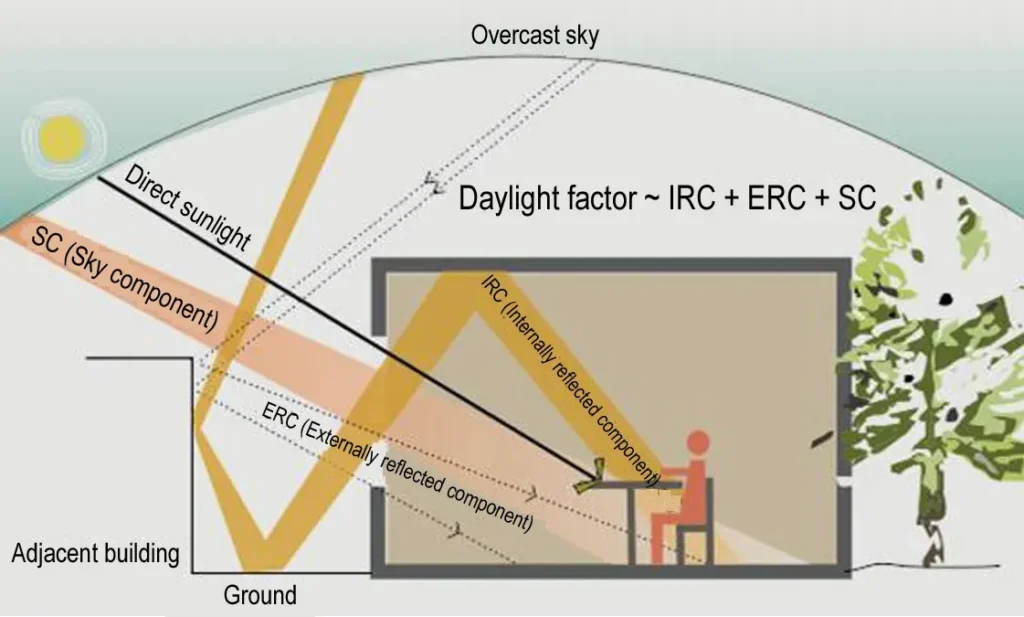
- (a) light from the patch of sky visible at the point considered, expressed as the sky component (SC),
- (b) light reflected from opposing exterior surfaces and then reached the point, expressed as the externally reflected component (ERC),
- (c) light entering through the window but reaching the point only after reflection from internal surfaces, expressed as the internally reflected component (IRC).
The sum of the three components gives the illuminance due to daylight Ei = SC + ERC + IRC
3) Purpose and Uses
- It helps as a guideline for determining the quantitative characteristics of daylight in a particular work space.
- Based on these guidelines, It can be determined whether a room has sufficient daylight.
- In certain cases may even dictate a change in the design.
4) Artificial lighting
- Artificial lighting is being used more and more in the world.
- The usage is quite non-homogeneous. In developing countries, we can still find a widespread use of fuel based lighting but nowadays the situation is changing and the demand for electric based lighting is growing.
- Electric lighting consumes about 19% of the world total electricity use. So, we should remember and consider that the improvement in energy efficient lighting will also be helpful for the progress in developing countries.
- Every change in technologies, in customers’ consumption behaviour, even in lifestyle, has influences on global energy consumption and indirectly, on environment.
5) Fundamental photo-metric magnitudes
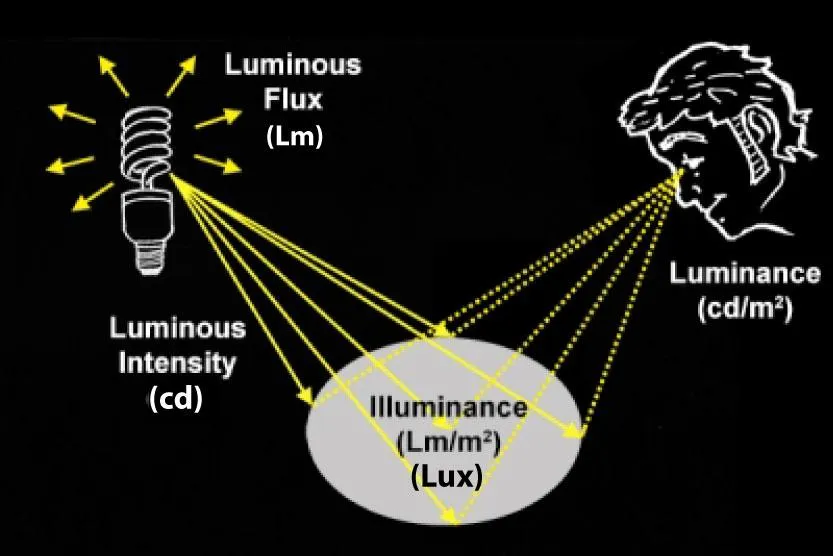
i) Luminous Flux
- It is the rate of flow of light energy, or power output of visible light that is radiated from a source, unit used with luminous flux is lumen (lm).
ii) Intensity
- The luminous intensity of a light source is the amount of light that the source gives off (i.e. the brightness). The unit of luminous intensity is the Candela.
iii) Illuminance
- The brightness of an object, or the strength of the light reflected from it, or The amount of light on a surface area is called illuminance (E) and is measured in lumens/m2 or lux.
iv) Luminance
- It is a photometric measure of the luminous intensity per unit area of light travelling in a given direction. It describes the amount of light that passes through, is emitted or reflected from a particular area, and falls within a given solid angle
6) Light Mechanics
- Light travels in a straight line until it strikes a surface. It is then modified by transmission, refraction, reflection, or absorption.
i) Transmission
- There are three general categories of transmission:
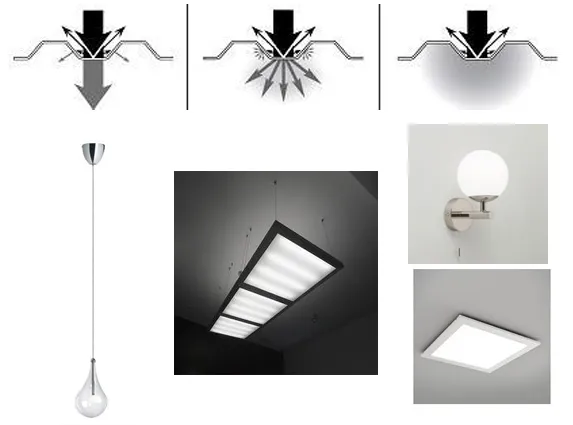
- Direct transmission occurs when light strikes transparent material which can be seen through. These materials absorb almost none of the light in its passage through the material, and do not alter the direction of the light ray.
- Spread transmission Occurs with translucent materials in which the light passing through the material emerges in a wider angle than the incident beam, but the general direction of the beam remains the same.
- Diffuse transmission Occurs with semi opaque materials such as opal glass, and the light passing through the material is scattered in all directions. These materials absorb some of the light, and the emerging rays are of less intensity than the transmitted rays.
ii) Refraction

- Refraction occurs when a beam of light is bent as it passes from air to a medium of higher density.
- This occurs because the speed of the light is slightly lower in the medium of higher density.
- Two commonly used refractive devices are prisms and lenses. A prism is made of transparent material which has nonparallel sides.
- Smaller prisms are used in lighting fixtures to lower brightness or to redirect light into useful zones. Lenses are used to cause parallel light rays to converge or diverge, focusing or spreading the light.
iii) Reflection
Reflection occurs when light strikes a shiny opaque surface, or any shiny surface at an angle. Reflection can be classified in three General categories:
- specular reflection
- spread reflection
- diffuse

- Specular reflection occurs when light strikes a highly Polished or mirror surface. The ray of light is reflected or bounced off the surface at an angle equal to that at which it arrives. Very little of the light is absorbed, and almost all of the incident light Leaves the surface at the reflected angle.
- Spread reflection occurs when a ray of light strikes a polished but granular surface. The reflected rays are spread in diverging angles, due to reflection from the facets of the granular surface.
- Diffuse reflection occurs when the ray of light strikes a reflective opaque but non-polished surface, such as flat white paint.
iv) Absorption
- Absorption occurs when the object struck by the light ray retains the energy of the ray in the form of heat.
- Some surfaces, like flat black paint, absorb nearly all of the incident light rays. These surfaces, such as those of a solar collector panel, tend to get very hot when placed in the sunlight.
With these principles in mind, you can predict how the light itself will behave when used with the various control devices.
7) Glare

- The excessive brightness from a direct light source that makes it difficult to see what one wishes to see.
- Glare is defined as the brightness within the field of vision of such a character so as to cause discomfort and interference in vision
- It causes:
- Discomfort
- Annoyance
- Interference
- Eye fatigue
- Disturb the nervous system
- Risk of accidents

8) Types of glare
- Direct Glare
- Indirect / Reflected Glare
- Direct glare results from bright luminaries in the field of vision.
- Direct glare, minimization or avoidance is possible by mounting luminaries well above the line of vision or field of vision. Limit both brightness and light flux.
- Reflected glare arises due to reflection of such a source from a glossy surface it is more annoying than direct glare can be avoided by appropriate choice of interiors.
9) Lighting and human needs
In all areas of life and throughout the working world, good and appropriate lighting is a prime requirement for enabling us to:
- see clearly,
- enjoy a sense of wellbeing,
- perform concentrated fatigue-free work,
- perceive and interpret important information and our surroundings correctly.
- This calls for good, professional lighting design.
10) Layers of light
- There are four layers of light typically used in residential lighting: general (also called ambient) lighting, task lighting, accent lighting, and decorative lighting. Combining and balancing these lighting types gives visual interest to the space and creates a more attractive, exiting and inviting environment.
i) General lighting
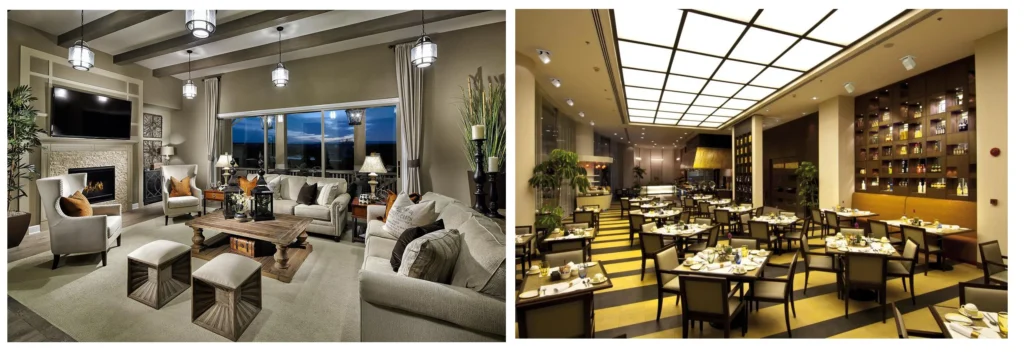
- General lighting is the main source of illumination in a space. This uniform, base level of lighting can easily become the focus of energy reduction, as the light levels from other fixtures can be lowered. It provides the area with overall illumination, more specifically for orientation and general tasks.
- Ambient lighting should radiate a comfortable level of brightness and provide a sense of relaxation and spaciousness.
- The light level should be uniform throughout the space, inconspicuous and neutral.
- A simple way to achieve this is by arranging recessed fixtures using reflectors, baffles, and lensed trims in overlapping positions.
ii) Task lighting

- Task lighting is used to illuminate an area for a specific task; providing a focused, localized, and higher level of illumination.
- Necessary to the functioning of a space, it is important to use energy efficient sources to reduce operating costs.
- Task lighting is most effective when used as a supplement to general lighting in workspaces, conference areas and on counter tops.
- Effective task lighting should eliminate shadows on the specific illuminated area, while preventing glare from the lamp or off surfaces. Although ambient light should still provide the majority of illumination, task lighting reduces the reliance on overhead lighting, and provides a better quality of light for specific tasks.
- When lighting a task area, take into account the difference in brightness, or contrast, between the task area and the surrounding space. A 3:1 ratio of task lighting to general illumination provides a nice contrast.
iii) Accent lighting
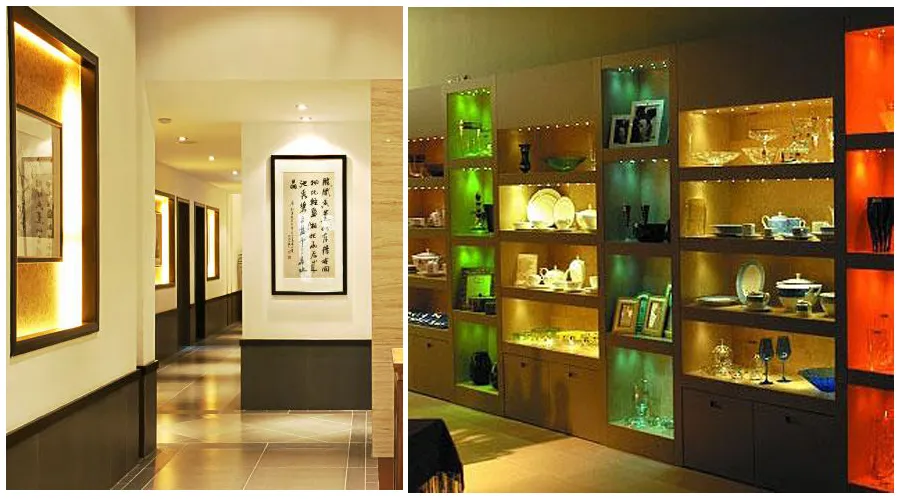
- Accent lighting reinforces design aesthetics and creates a dramatic emphasis on shapes, textures, finishes and colors. It creates a visual interest in the space and can enhance almost anything. It adds depth, contrast and creates a focal point; it highlights shape, texture, finish and color. The key is to make this illumination more precise and of higher intensity than the surrounding ambient light.
- Track fixtures, recessed housings with adjustable trims and concealed adjustable illumination with point source lamps provide directional control and are especially effective for accent lighting. They are easy to aim precisely to highlight products’ best attributes and influence the customers’ impression.
- Accenting everything and emphasizing nothing is a common mistake with accent lighting; always keep in mind that there such a thing as providing too much light. The standards recommend a 5:1 ratio of accent lighting to ambient light to make objects stand out and create a significant visual effect; dark merchandise may require a higher ratio to bring out detail. For feature displays, higher ratios of 15:1 or 30:1 are used, especially to create sparkle in jewelry or crystal.
11) Lighting schemes
Lighting schemes are classified according to the location, requirement and purpose etc. are as under:
- Direct lighting
- Indirect lighting
- Semi direct lighting
- Semi indirect lighting
- Diffuse lighting
i) Direct Lighting
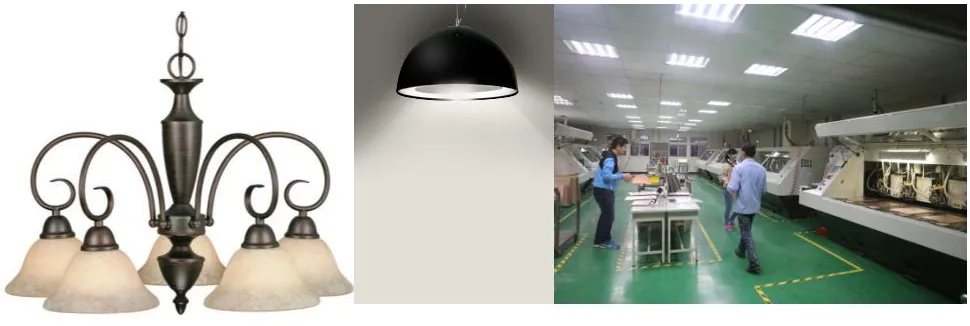
- As is clear from the name, in this system almost 90 to 95 % light falls directly on the object or the surface. The light is made to fall upon the surface with the help of deep reflectors.
- Such type of lighting scheme is most used in industries and commercial lighting. Although This scheme is most efficient, but it is liable to cause glare and shadows.
ii) Indirect Lighting
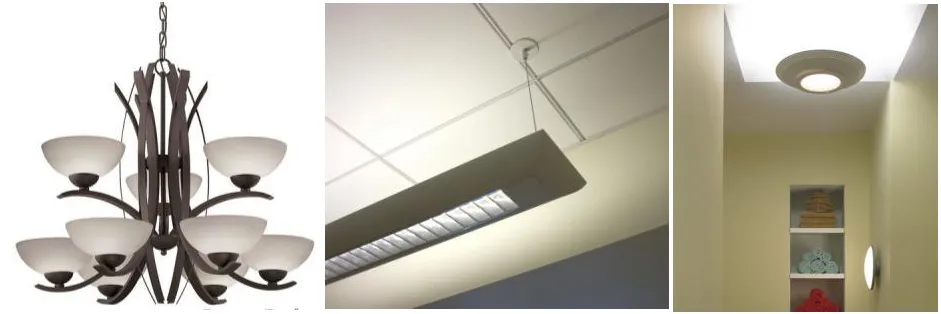
- In this system, the light does not fall directly on the surface but more than 90 % of light is directed upwards by using diffusing reflectors.
- Here the ceiling acts as a source of light and this light is uniformly distributed over the surface and glare is reduced to minimum.
- It provides shadow less illumination which is useful for drawing offices and composing rooms.
- It is also used for decoration purposes in cinema halls, hotels etc.
iii) Semi Direct Lighting

- This is also an efficient system of lighting and chances of glare are also reduced.
- Here transparent type shades are used through which about 60 % light is directed downward and 40 % is directed upward.
- This also provides a uniform distribution of light and is best suited for room with high ceilings.
iv) Semi Indirect Lighting
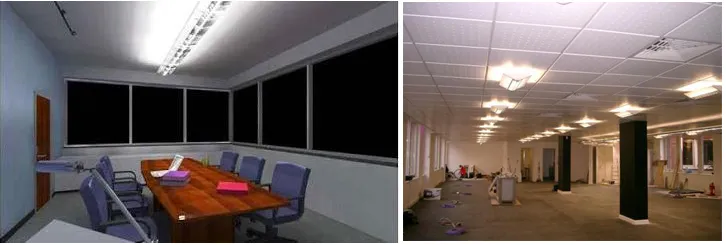
- In this system about 60 to 90 % of total light is thrown upward to the ceiling for diffused reflection and the rest reaches the working plane directly.
- A very small amount of light is absorbed by the bowl. It is mainly used for interior decoration.
v) Diffused Lighting

- This system employs such type of luminaries, shades and reflectors which give equal illumination in all the directions.


Overall, lighting is a critical aspect of architecture, and its incorporation can significantly affect the look and feel of a building. With the constant evolution of lighting technology, architects have an ever-increasing array of tools and techniques at their disposal to create dynamic and innovative lighting designs.
Very Good Learning platform